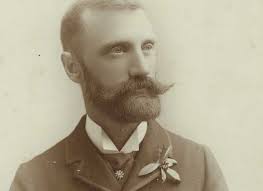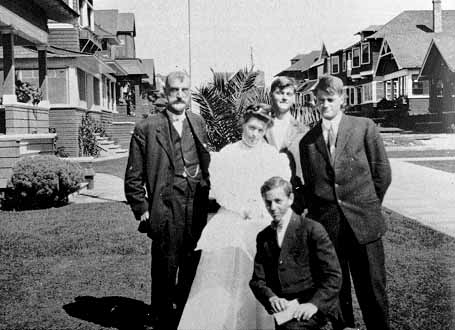Venice | History of the area
- myrealtornews
- Jun 23, 2016
- 4 min read

The founder of the “Venice of America” was born in November 1850 at a farm in New Brunswick, New Jersey. Abbot Kinney was educated in Europe and spoke 6 languages. Kinney enjoyed cultural activities and travelling the world for business and pleasure. In 1874, he became a junior partner in his older brother’s tobacco business. The company was located in New York City, with warehouses in Virginia and North Carolina. Later, Kinney became a buyer who spent much of his time traveling. Toward the end of a trip in 1880 to San Francisco, he heard about a health spa specializing in therapeutic qualities located in the foothills east of Los Angeles, a place called “Sierra Madre Villa”. Hoping to cure his asthma, he traveled to the spa only to find that there was no room available at the time. He ended up playing billiards, fell asleep on the game table and woke up in the morning proclaiming that “it was the best night’s sleep he ever had”. (That’s what I call therapeutic!)
He fell in love with the air quality in Southern California and decided to build a home near what is now Pasadena. In 1884, after getting married to his wife, Margaret, the two moved to a new home in Santa Monica. He soon became interested in land development. In 1891, Kinney and his business partner, Francis Ryan, purchased a land in Santa Monica and started their first land development, building a resort called “Ocean Park”.
At the time, the land Kinney owned was thought to be inhospitable and the public thought it wasn’t worth anyone’s attention. Regardless of everyone else’s opinion, Kinney announced that he was going to build a town, “Venice Of America”, inspired by the social and cultural heritage of Venice, Italy. People started calling the proposed development “Kinney’s Folly”.
On July 4th, 1905, Venice of America opened to public. A crowd of 40,000 people showed up and it was an instant success. As interpreted by Kinney, the new area featured a pier, auditorium, ship café, theatre, Pavilion, a yacht club, surf bath house, a country club, dance hall, aquarium chariot track with grandstand, miniature railroad with roundhouse and depot, boat house, a post office, 7 canal waterways radiating from the swimming lagoon (featuring a flotilla of gondolas imported from Italy) and a block long business street adorned with Venetian architecture.
In 1909, he expanded the pier to become a full-fledged amusement pier. Rides and game booths were added to the pier. The area which bore Kinney’s personal vision later changed its official name from Ocean Park to Venice in 1911. The population increased dramatically from its 3119 residents in 1910 to exceeded 10,000 and drew up to 150,000 tourists on the weekends.
Kenney passed away in November, 1920. Thornton, Kinney’s eldest son, took over the business. Six weeks after Kenney’s death, a fire completely destroyed the pier. After the fire, Thornton announced that the pier will be rebuilt. The process took about 6 months and a cost of 3 million dollars. The pier reopened on July 4th, 1921 and became “the finest amusement pier on the West Coast”, bringing a hundred thousand visitors during weekends.
Venice has always had issues in politics. In the early 1920’s there was a campaign against alcohol, girlie parades, café dancing and boxing matches dividing the city into two groups; the amusement supporters and the local clergy, which also focused on other issues in the city such as corruption, official accepting bribes, and failing to enforce laws. Gambling and brothels became a noticeable part of the local scene, and in some ways (most noticeably, through taxation) the area’s civic leaders profited. Possibly as a consequence, the city of Venice soon became a part of Los Angeles.

According to paradisedarling.com,“It’s like Venice annexing Disneyland”; the city of Los Angeles proceeded to take down the amusement industry. The miniature railroad and the majority of the canals were replaced with pavement to accommodate automobile traffic. As of today, the only part of the canals that remain intact is in the area south of Venice Blvd. The pier’s lease expired in 1946 and the Los Angeles parks and recreation Department refused to renew the lease.
In the early 60’s a new “Code Enforcement” instituted by the City required all buildings to be upgraded to current building standards. Most people weren’t able to obtain the loans needed to comply. As a result, about 550 buildings along the ocean front and windward business district were demolished.

Also in the 60’s, a new group of people, “The Beats” or “Beatniks”, had made their way into the Venice neighborhood, bringing a Bohemian life-style (e.g. art, poetry and new-jazz). It was a continuation of a ‘counter-culture’, much like the history of Venice itself, where the locals seemed to enjoy flaunting the societal norms as a means of personal expression. The “Beats” were followed by the “Hippies” or Flower Children, who in turn were followed by the Punks, Slackers, and the current Millenials.
Beginning with the 1984 Summer Olympics, with Los Angeles as its host, Venice began receiving visitors from around the world on a daily basis. The international interest in Venice as a tourist destination is maintained to this day. Keeping with its colorful tradition, Venice has become the number one seaside destination on the West Coast.

As a vestige of its counter-culture heydays, The Venice Family Clinic is the largest free clinic operating in the US. Visit Venice and be a part of history.
Reference:












































Comments